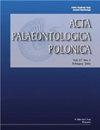IF 1.9
3区 地球科学
Q2 PALEONTOLOGY
引用次数: 0
摘要
在这篇文章中,作者讨论了兽医诊所(动物治疗机构)的名称。研究材料包括339个名称,从“截至2021年12月17日兽医实践登记册”中获得,该登记册由东北兽医商会保存,该商会负责监督Podlaskie省的兽医专业。从中摘录了164个适当的公司名称,其结构和语义具有特征,并分配给语义领域:生物圈,人类圈,(兽医)医学和服务。此外,还分析了商号词的非语义要素。结论表明,兽医实践的所有者具有较高的术语能力,这使得他们能够为自己的公司发明具有语义创造性的名称,但在平面设计领域却没有创新能力。它们大多唤起了积极的情感态度,这反映了动物在现代文化中的崇高地位。获得的材料揭示了进一步的研究视角,并得出结论,即onomastic数据可能成为动物研究的有趣补充,这是人文和社会研究的跨学科领域。考虑到到目前为止,兽医诊所的名称还没有包括在语言反射中,这项工作是这一领域的初步努力。本文章由计算机程序翻译,如有差异,请以英文原文为准。
Arka Noego – o różnorodności semantyczno-strukturalnej nazw zakładów leczniczych dla zwierząt (na materiale Północno-Wschodniej Izby Lekarsko-Weterynaryjnej)
In this article, the author discusses the names of veterinary clinics (animal treatment facilities). The research material, including 339 names, was obtained from the “Register of veterinary practices as of 17.12.2021”, kept by the North-Eastern Veterinary Chamber, which supervises the veterinary profession in the Podlaskie Voivodeship. 164 proper firmonyms were excerpted from it, characterized in terms of structure and seman-tics, and assigned to the semantic fields: biosphere, anthroposphere, (veterinary) medicine, and services. Non-semantic elements of firmonyms were analysed as well.The conclusions show that the owners of veterinary practices have high onomastics competence, which allows them to invent semantically creative names for their companies, but are not as innovative in the field of graphic design. Most of them invoke positive emotional attitudes, which reflects the high position of animals in modern culture. The material acquired reveals further research perspectives and leads to the conclusion that onomastic data may become an interesting complement to animal studies, an interdisciplin-ary field of humanities and social studies research.Considering the fact that so far the names of veterinary clinics were are not included in linguistic reflection, this work is a preliminary effort in this field.
求助全文
通过发布文献求助,成功后即可免费获取论文全文。
去求助
来源期刊

Acta Palaeontologica Polonica
地学-古生物学
CiteScore
2.80
自引率
5.60%
发文量
36
审稿时长
12.5 months
期刊介绍:
Acta Palaeontologica Polonica is an international quarterly journal publishing papers of general interest from all areas of paleontology. Since its founding by Roman Kozłowski in 1956, various currents of modern paleontology have been represented in the contents of the journal, especially those rooted in biologically oriented paleontology, an area he helped establish.
In-depth studies of all kinds of fossils, of the mode of life of ancient organisms and structure of their skeletons are welcome, as those offering stratigraphically ordered evidence of evolution. Work on vertebrates and applications of fossil evidence to developmental studies, both ontogeny and astogeny of clonal organisms, have a long tradition in our journal. Evolution of the biosphere and its ecosystems, as inferred from geochemical evidence, has also been the focus of studies published in the journal.
 求助内容:
求助内容: 应助结果提醒方式:
应助结果提醒方式:


